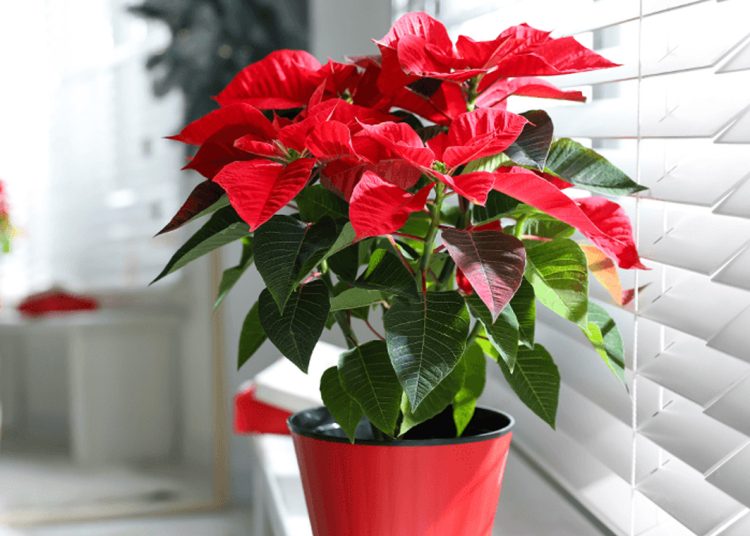Poinsettias, known for their vibrant red, pink, or white bracts and dark green foliage, are a holiday favorite that brighten up homes and celebrations. While they are relatively easy to care for, understanding the lighting needs of poinsettias is essential for keeping them healthy and encouraging their seasonal beauty. So, the question arises: Do poinsettias like sun or shade?
Poinsettias and Light Requirements
Poinsettias, native to tropical regions of Mexico, thrive in bright, indirect light. They prefer a well-lit environment but not direct sunlight, which can scorch their delicate leaves and cause them to lose their color. Understanding how much light your poinsettia needs is key to ensuring it remains vibrant and healthy throughout its bloom period and beyond.
Optimal Lighting Conditions
Bright, Indirect Light: Poinsettias do best in locations that receive bright, indirect sunlight. This could be near a window that faces east or west. These windows provide plenty of light without the intense heat and glare that direct sun exposure can bring.
- Avoid Direct Sunlight: While poinsettias need light, direct sunlight can be too intense for them. Exposure to direct sunlight, especially during the hottest parts of the day, can scorch their leaves, causing the edges to turn brown and the bracts to lose their color. It can also dry out the soil faster, leading to water stress.
- Filtered Light: If you place your poinsettia near a south-facing window, it’s best to filter the sunlight with sheer curtains or shades. This ensures the plant receives plenty of light but without the harsh effects of full sun exposure.
Why Light Matters for Poinsettias
The amount of light your poinsettia gets plays a crucial role in its overall health and ability to produce its colorful bracts. Here’s why:
- Flowering: Poinsettias are short-day plants, meaning they need long periods of darkness to produce their distinctive colorful bracts. While they need light during the day, it’s the length of the nighttime period that helps trigger blooming. If you want to encourage your poinsettia to bloom for the next season, keep it in a spot where it can experience about 12-14 hours of darkness each night for about 6 weeks before the blooming season (typically starting in late September or October).
- Health: Proper light conditions support the plant’s overall health. Too little light can cause leggy, weak growth, while too much light (especially direct sun) can cause stress and leaf damage. Finding that balance is key to a thriving poinsettia.
Considerations for Placement
Indoor Placement: During the winter months, when poinsettias are typically purchased and displayed, place them in a spot that mimics their native tropical environment — warm and bright but away from cold drafts or excessive heat. A well-lit room with indirect light will be ideal. If you notice your poinsettia stretching or leaning toward the light source, it may not be getting enough light, and you might want to move it to a brighter spot.
- Outdoor Placement (Seasonal): If you live in a warm climate and want to move your poinsettia outdoors during the spring or summer, ensure it gets partial shade or filtered sunlight. If left in direct sunlight for too long, especially in the hottest part of the day, the plant may suffer from sunburn or dehydration.
Signs Your Poinsettia Is Not Getting the Right Light
If your poinsettia isn’t happy with its lighting conditions, it will often show visible signs:
- Leggy Growth: If your poinsettia is stretching out and becoming leggy, it’s likely not getting enough light. It will grow taller with sparse leaves, searching for more sunlight.
- Yellowing Leaves: Too much direct sunlight can cause yellowing leaves, as well as leaf edges turning brown and crispy.
- Wilted or Drooping Leaves: While this can also be a sign of under-watering, wilting leaves can also occur if the plant is exposed to too much sunlight or is too close to a heat source.
Conclusion
Poinsettias need bright, indirect light to thrive. While they can tolerate some direct sunlight, prolonged exposure can lead to sunburn, dry leaves, and a stressed plant. To keep your poinsettia healthy, place it near a window with plenty of natural light but shielded from direct sun. During the holiday season and beyond, giving your poinsettia the right amount of light will ensure it stays vibrant and beautiful, making it the perfect festive decoration.
If you're planning to keep your poinsettia year-round, remember that finding a bright spot that offers filtered light will help it continue to flourish, and if you're hoping for another blooming season, providing the right light levels will support its growth cycle.
With these lighting tips, you can ensure your poinsettia thrives and adds cheer to your home throughout the year!
















